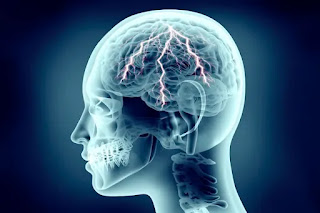Epilepsy is a neurological condition that causes unprovoked, recurrent seizures. A seizure is a sudden rush of abnormal electrical activity in your brain. Doctors diagnose epilepsy when you have two or more seizures with no other identifiable cause.
Epilepsy affects 50 million people around the world, according to the World Health Organization (WHO) and nearly 3.5 million people in the United States, per the Centers for Disease Control and Prevention (CDC).
Anyone can develop epilepsy, but it most commonly onsets in young children and older adults. According to research published in 2021, men develop epilepsy more often than women, possibly because of higher exposure to risk factors like alcohol use and head trauma.
The two main types of seizures are:
generalized seizures
focal seizures
Generalized seizures affect your whole brain. Focal, or partial seizures, affect only one part of your brain.
A mild seizure may be difficult to recognize. It may only last a few seconds, and you may remain awake while it happens. Stronger seizures can cause spasms and uncontrollable muscle twitches. They can last from a few seconds to several minutes and may cause confusion or loss of consciousness. Afterward, you may have no memory of a seizure happening.
There’s currently no cure for epilepsy, but it can be managed with medications and other strategies.
What are the symptoms of epilepsy?
Seizures are the main symptom of epilepsy. Symptoms differ from person to person and according to the type of seizure.
Focal (partial) seizures
A focal aware seizure (previously called simple partial seizure) does not involve loss of consciousness. Symptoms include:
alterations to sense of taste, smell, sight, hearing, or touch
dizziness
tingling and twitching of limbs
Focal unaware seizures (previously called complex partial seizures) involve loss of awareness or consciousness. Other symptoms include:
staring blankly
unresponsiveness
performing repetitive movements
Generalized seizures
Generalized seizures involve the whole brain.
Subtypes include:
Absence seizures. Absence seizures used to be called “petit mal seizures.” They tend to cause a short loss of awareness, a blank stare, and may cause repetitive movements like lip smacking or blinking.
Tonic seizures. Tonic seizures cause sudden stiffness in the muscles in your legs, arms, or trunk.
Atonic seizures. Atonic seizures lead to loss of muscle control. They’re also called “drop seizures” because a sudden loss of muscle strength can make you fall suddenly.
Clonic seizures. Clonic seizures are characterized by repeated, jerky muscle movements of the face, neck, and arms.
Myoclonic seizures. Myoclonic seizures cause spontaneous quick twitching of the arms and legs. Sometimes these seizures cluster together.
Tonic-clonic seizures. Tonic-clonic seizures used to be called “grand mal seizures.” Symptoms include:
stiffening of the body
shaking
loss of bladder or bowel control
biting of the tongue
loss of consciousness
Following a seizure, you may not remember having one, or you might feel slightly ill for a few hours.
- Stay with the person until their seizure ends and they’re awake.
- Once they’re awake, guide them to a safe place and tell them what happen.
- Stay calm and try to keep other people calm.
- Speak calmly.
- Check for a medical bracelet.
- Offer to help the person get home safely.
- Ease the person to the ground.
- Turn them gently onto their side to help them breathe.
- Clear any dangerous objects away from them.
- Put something soft under their head.
- If they wear glasses, remove them.
- Loosen any clothing, such as a tie, that may affect breathing.
- lack of sleep
- illness or fever
- stress
- bright lights, flashing lights, or patterns
- caffeine, alcohol or alcohol withdrawal, medications, or illegal drugs
- skipping meals, overeating, or specific food ingredients
- very low blood sugar
- head injury
- day and time
- what activity you were involved in
- what was happening around you
- unusual sights, smells, or sounds
- unusual stressors
- what you were eating or how long it had been since you’d eaten
- your level of fatigue and how well you slept the night before.
- the severity of your symptoms
- your health
- how well you respond to therapy
- Anti-epileptic (anticonvulsant, antiseizure) drugs. Anti-epileptic medications can help reduce the number of seizures you have. In some people, they may eliminate seizures. To be most effective, the medication must be taken exactly as your doctor prescribed.
- Vagus nerve stimulator. This device is surgically placed under the skin on your chest and electrically stimulates the nerve that runs through your neck to prevent seizures.
- Ketogenic diet. According to the Epilepsy Foundation, more than half of children who do not respond to medications benefit from the ketogenic diet, which is a high fat and low carbohydrate diet.
- Brain surgery. The area of the brain that causes seizure activity can be removed or altered if you and your healthcare team determine it’s the right treatment for your condition.
- levetiracetam (Keppra)
- lamotrigine (Lamictal)
- topiramate (Topamax)
- valproic acid (Depakote)
- carbamazepine (Tegretol)
- ethosuximide (Zarontin)






























0 Comments